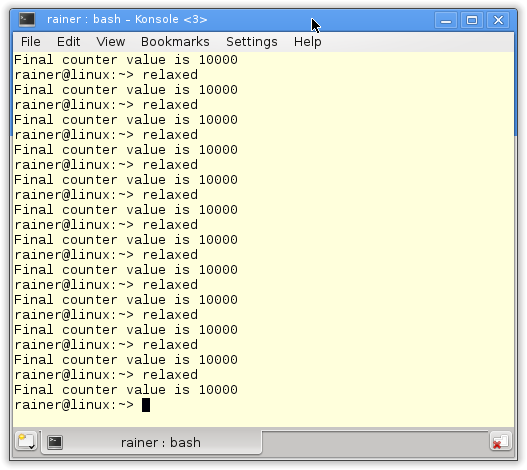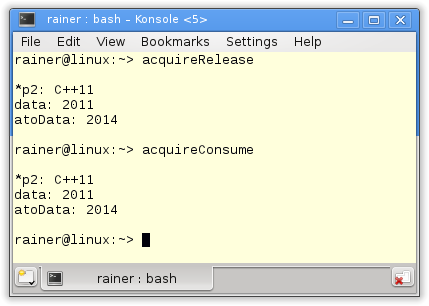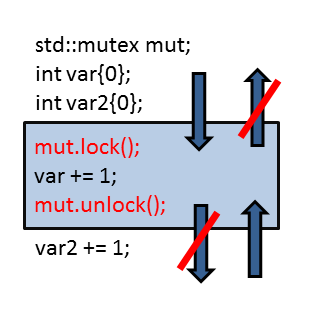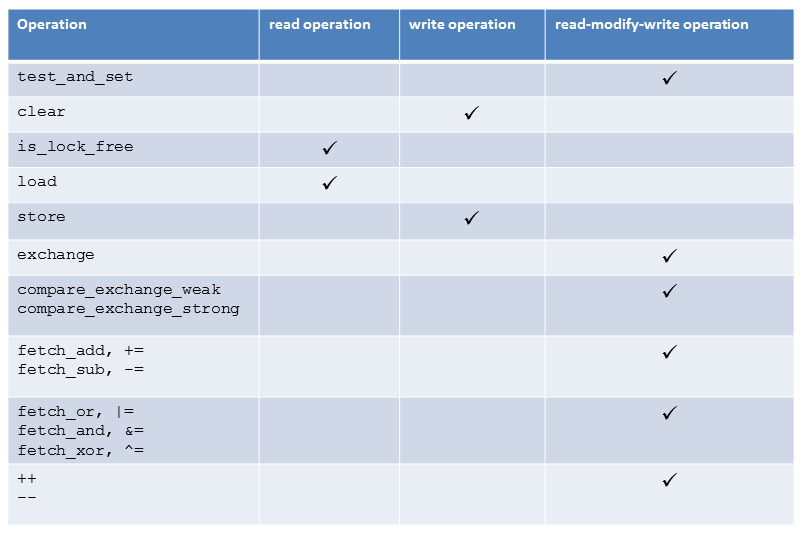
Relaxed Semantics
/
0 Comments
The relaxed semantics is the end of the scale. The relaxed semantic is the weakest of all memory models…

Acquire-Release Fences
Acquire and release fences guarantee similar synchronization and ordering constraints as atomics with…

Fences are Memory Barriers
The key idea of a std::atomic_thread_fence is to establish synchronization and ordering constraints between…

Acquire-Release Semantics – The Typical Misunderstanding
A release operation synchronizes-with an acquire operation on the same atomic variable. So we can easily…

Transitivity of the Acquire-Release Semantic
A release operation synchronizes with an acquire operation on the same atomic variable and establishes,…

memory_order_consume
std::memory_order_consume is the most legendary of the six memory models. That's for two reasons. On…

Acquire-Release Semantic
With the acquire-release semantics, the memory model gets very thrilling. Because now, we do not have…

Sequential Consistency applied
I have introduced In the post Sequential Consistency the default memory model. This model, in which all…

Synchronization and Ordering Constraints
In this post, our tour through the c++ memory model goes one step deeper. Until now, the posts were only…
Atomics
In addition to booleans, there is atomics for pointers, integrals, and user-defined types. The rules…
